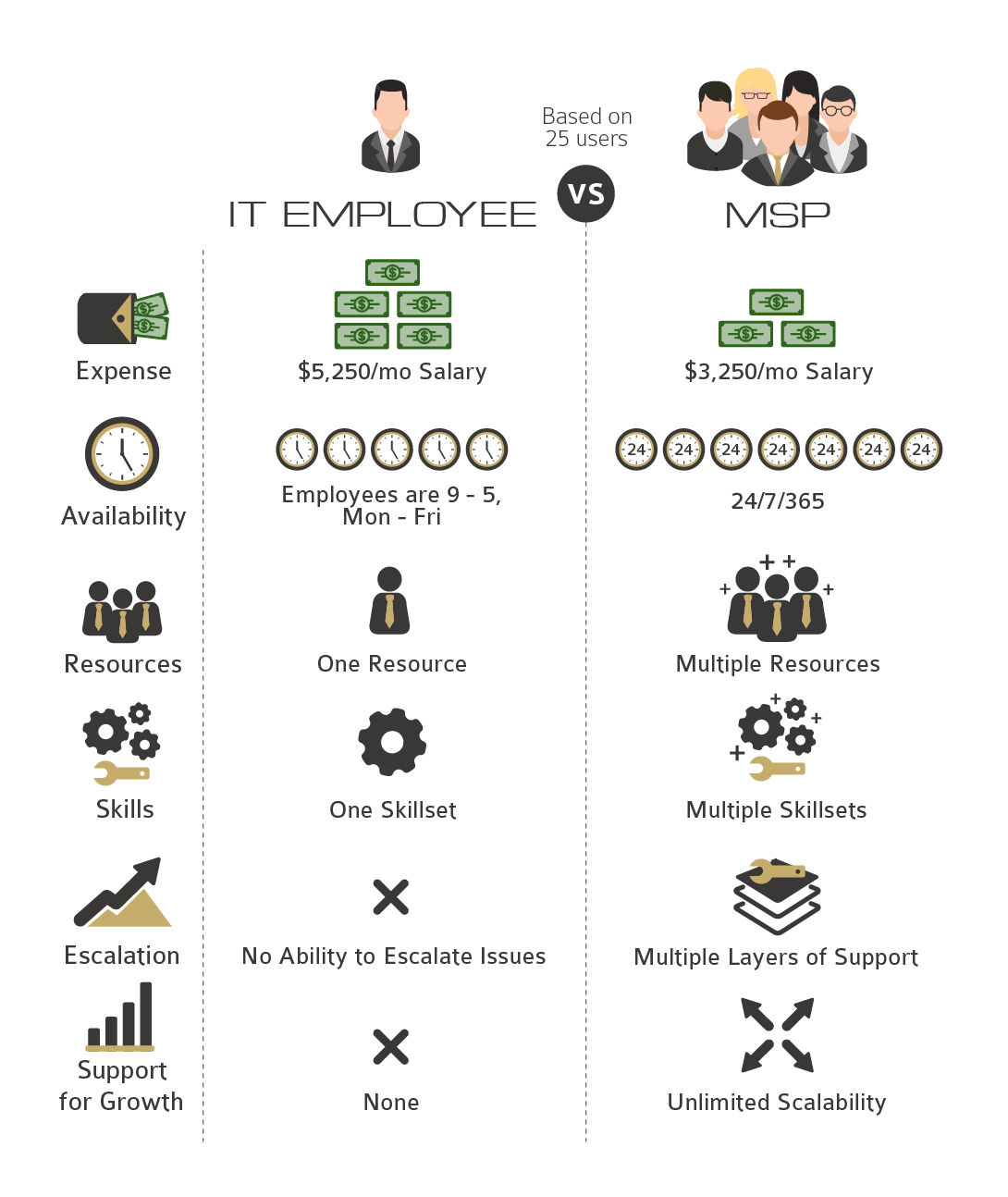
As your business grows, your IT needs inevitably increase along with your business. So what do you do? There are two viable choices companies in this situation may consider: hire an IT employee to help, or engage a managed service provider (MSP). Of course, both choices require extra budget. So how do you determine which one is most cost effective for your business?
As your business grows, your IT needs inevitably increase along with your business. So what do you do? There are two viable choices companies in this situation may consider: hire an IT employee to help, or engage a managed service provider (MSP). Of course, both choices require extra budget. So how do you determine which one is most cost effective for your business?
Dollars & Cents
There are many considerations that go into this decision. First of all, hiring an additional employee to help with IT functions is costly. The average IT help desk manager or employee in the IT field makes $63,000 per year. On a monthly basis, that’s $5,250 per month. Is your business bringing in enough income to sustain this added cost?
The number of IT users in your business makes a difference, too. A single IT person can effectively manage about 25 users. Has your business grown to a point where you have about 50 users, and therefore warrant another IT person to manage half of those users?
For perspective, a MSP charges $130 per user per month, on average. If you do the math, that’s $3,250 to support the same 25 users, compared to paying an employee $5,250 a month. Paying $2,000 less per month is much more cost-effective.
Cost-Effective MSP
Engaging an MSP to assist with your small business’ IT needs is more than a financial decision. A MSP offers multiple skill sets and layers of support, so if the first line of assistance—typically technicians at a help desk—can’t assist you, there is usually a manager or other people on staff who can solve your problem.
As your business grows, your level of support from a MSP can grow with you. This scalable service can support rapid growth, if your business is booming faster than you can keep up. Remember, hiring the right person can take a lot of time, and it can be challenging to find the right IT personnel if you are looking at multiple locations to support.
Another consideration is availability. Most employees only work normal business hours, with some flex in there. A MSP is available 24/7/365. As a business owner, you may be working hours outside the typical 8:00 to 5:00, and a MSP will be there to support you whenever you are working, not just during the normal working day.
Hiring an employee can be a gamble—you never know what you are going to get. Will they fit in with your company culture and other employees? Will they be effective on the job? Many MSPs guarantee the level of service that you will receive, so you will always know what you are going to get. A contract with a MSP states their terms of uptime guarantees, response times, etc., so you know what to expect.
In addition, employees are generally hired for one primary function, and their skill set may be somewhat limited. Or, you might hire a generalist whose skill set is broad but not deep. You may have to pay for professional development opportunities for them, if you want them to grow and enhance their skill set. And, if they don’t have the skills you need, when you need them, you may still have to hire outside support to get the job done.
Using a MSP for IT support offers additional resources and skills to support a more strategic approach to IT. Compared to an employee, who may quickly become overworked and spends the majority of their time dealing reactively with issues, a MSP can be more proactive, providing services such as virtual CIO or account strategy. You will end up getting much more than you are paying for.
For more information on the cost effectiveness of using a MSP, contact Tolar Systems today.